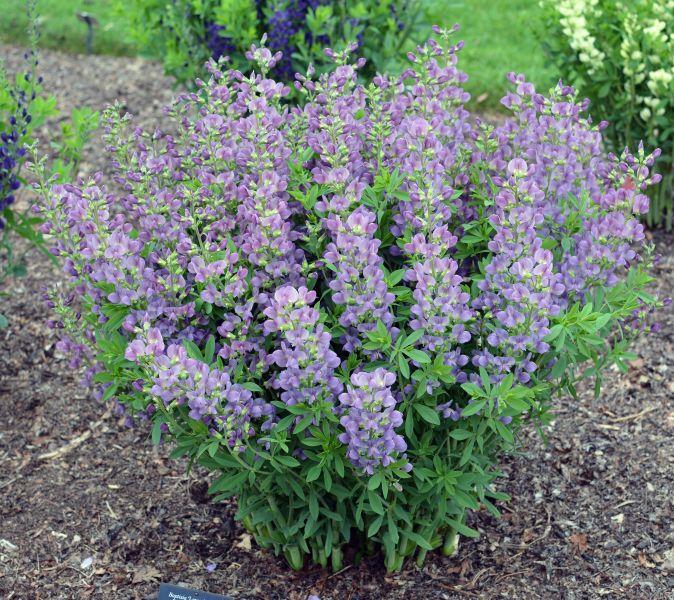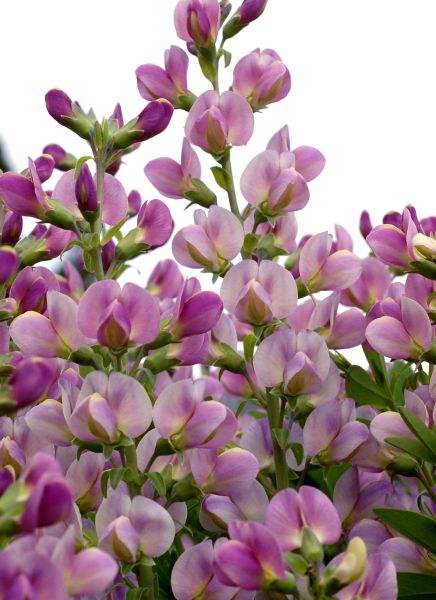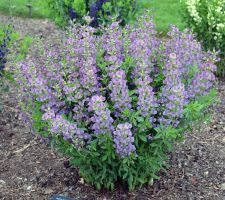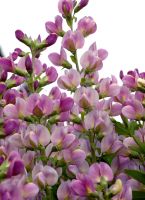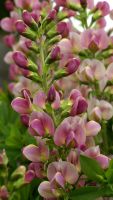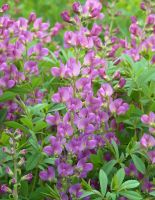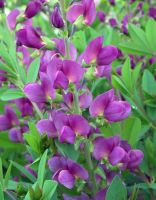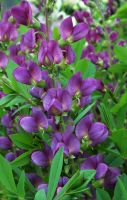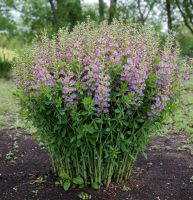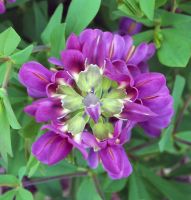Baptisia Lavender Rose
Vase shaped habit and fantastic flower power.
Selected partly for its distinct vase-shaped habit in bloom and its fantastic flower production, but most notably for its unique bloom color, this plant’s flowers start off medium rose-violet, then age to soft lavender-rose, as unique as its namesake the lavender rose. The inch-wide flowers are densely produced on 18”-long inflorescences. Expect three weeks of bloom from mid-May into early June (USDA Zone 5). After blooming, this vigorous and adaptable selection matures into a dense, broad mound with clean foliage. ‘Lavender Rose’ is an advanced-generation hybrid developed from Baptisia australis and B. bracteata.
Who Am I?
-
Common Name:Lavender Rose false indigo
-
Botanical Name:Baptisia 'Lavender Rose' PP25876
-
Type:Perennial


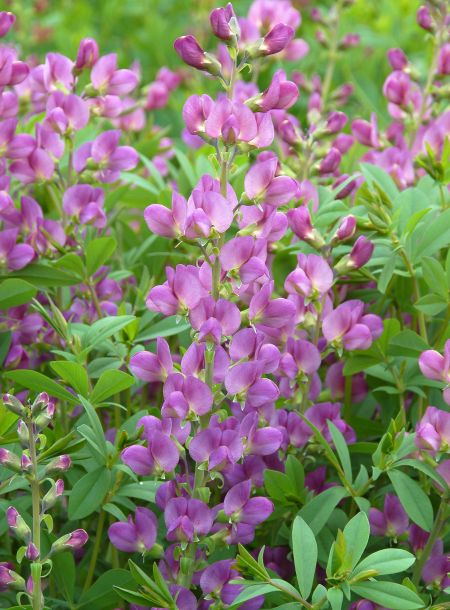
Cultural Details
TYPE
-
Light:Full sun
-
Soil:Moist, but well-drained, fairly adaptable to many soils
-
Moisture:Drought tolerant once established
-
Hardiness Zone4-9
-
Bloom Time:Late spring
-
Bloom Color:Lavender-pink
-
Fruit TimeFall
-
Fruit ColorGray
-
Size:3.5' tall by 5' wide
-
Diseases & Pests:False indigos exhibit good to excellent disease resistance. A seed weevil will predate the seed, but this does not detract from either plant health or display value. The genista broom moth caterpillar (Uresiphita reversalis) can seriously defoliate plants of Baptisia, but this tends to be more of a problem in warmer climes.
What Makes Me Special?
Landscape Use
Origin
The Prairieblues™ false indigos were developed by Jim Ault, Ph.D., at the Chicago Botanic Garden from crosses made between 1999 and 2004. The selections were developed from crossing Baptisia albescens (formerly B. alba), B. australis var. australis, B. australis var. minor, B. bracteata (formerly B. leucophaea), B. sphaerocarpa, and B. tinctoria in various c ombinations. All parent plants and selections were grown in-ground at the Chicago Botanic Garden (USDA Zone 5b) during the breeding and selection process.
